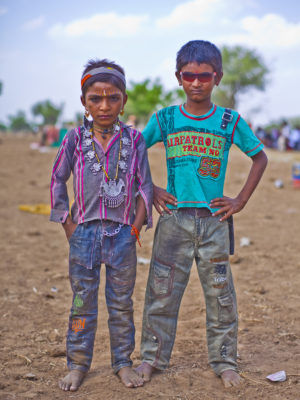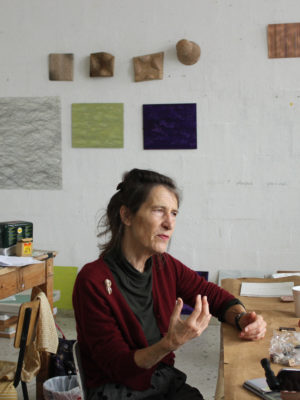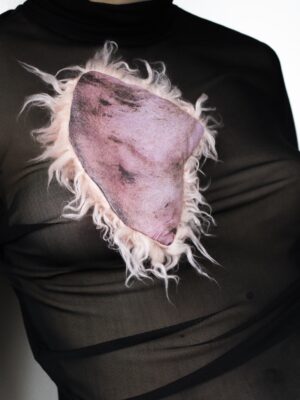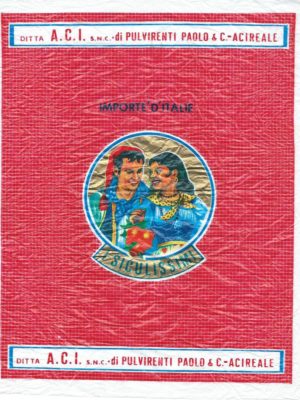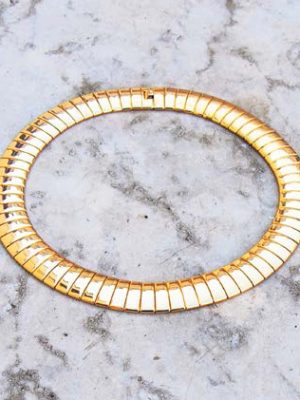The movie takes one on a psychedelic ride around dusty gypsy camps, where people of surreal beauty gaze directly into the camera, where the feeling of trust and intimacy is palpable and the storyline is improvised and unexpected. Bejewelled women sit on metal-frame beds in the middle of the desert. Barefoot men and children wear dreamlike costumes with a mix of 60’s Bollywood fashion and typical Indian garb with a nonchalant touch of boho.
With 2.5 million views on YouTube, the film inspired Current Obsession to dig deeper into the mysteries of the nomadic tribe and the man behind the camera, Raphaël Treza, via an interview.
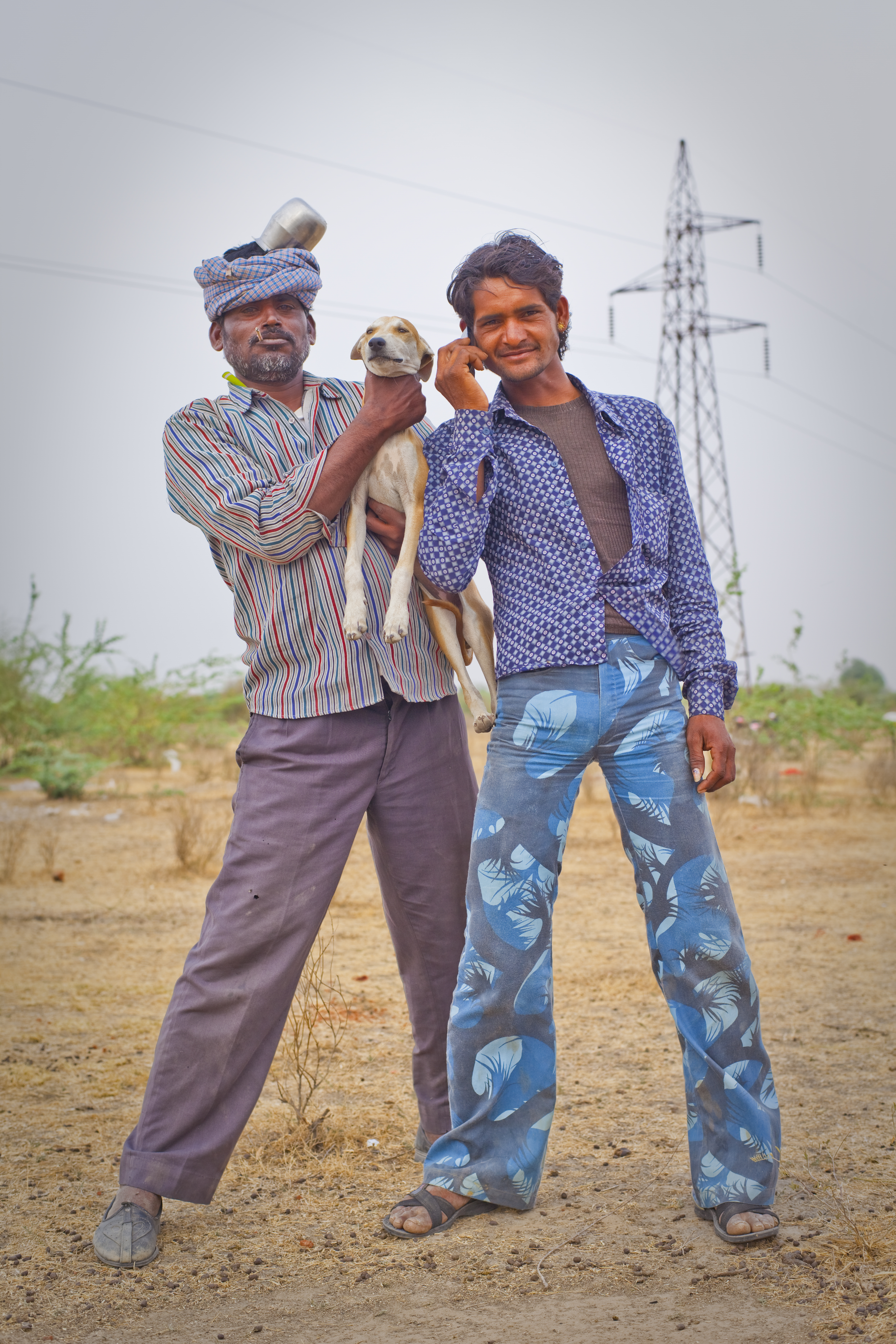
The Kalbelyias are nomads, they move with camels and motorbikes. I read that they originated from Punjab or Rajasthan (north west India), but they sometimes have Iranian or Afghani features, like green eyes, or light skin.
A concert of an Indian kartals (castanets) master in Paris ignited Treza’s fascination with the Kalbelyia. The musician was so technically adept that Treza was inspired to go to India and learn kartals techniques from the Kalbelyia tribe. He had already been travelling to India for the past twelve years, but in 2010, he first met a sedentary Kalbelyia family who introduced him to Biram, a young Kalbelyia, who became his translator, assistant and guide during the trip. The pair travelled Rajasthan on a rented motorbike, the only means to escape tourist crowds and rickshaw taxi scams.
Treza established his base camp in a cheap guesthouse in the city of Pushkar while travelling with Biram, sometimes sleeping in Kalbelyia camps for several days.
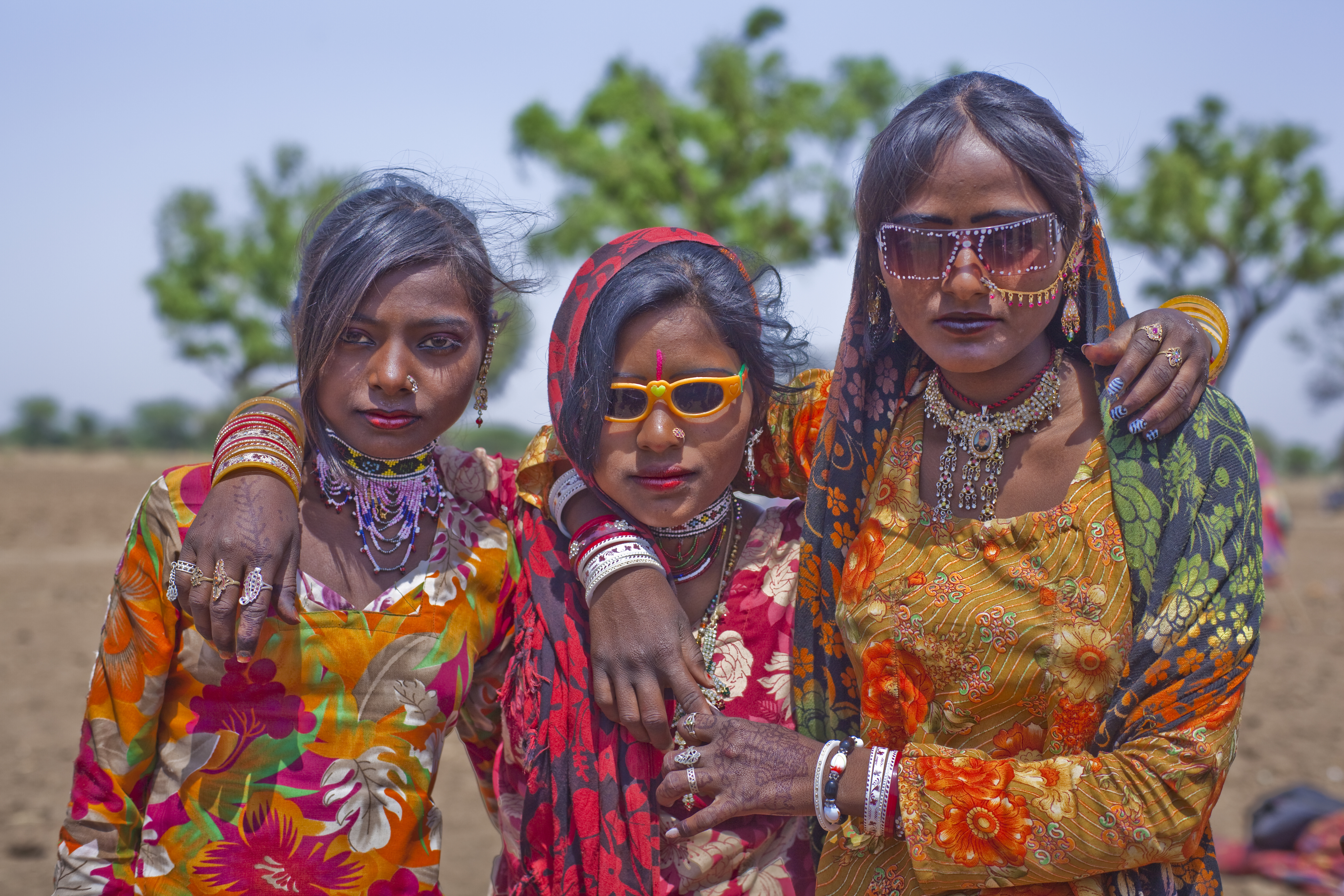
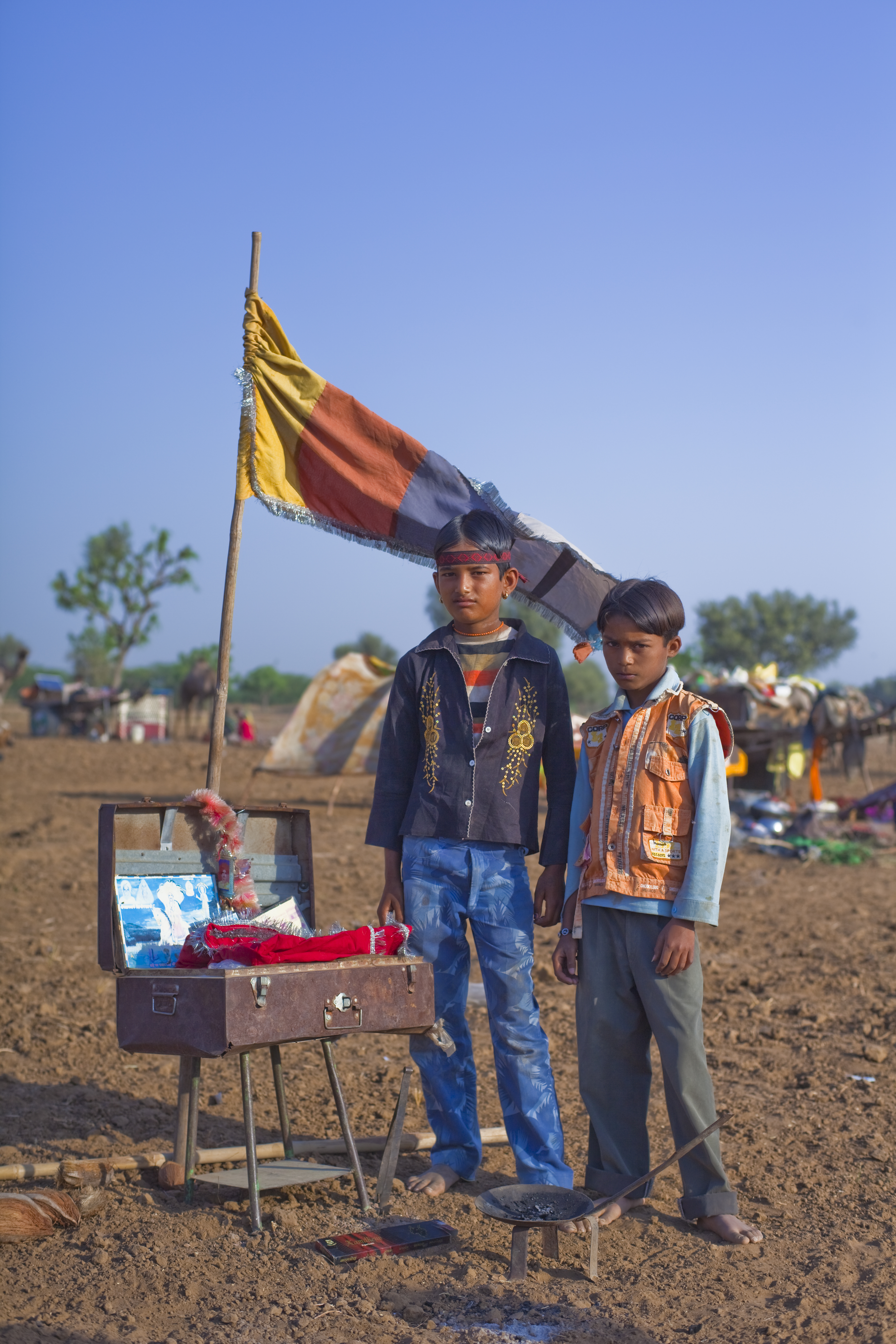
Being alone was the key to get closer to Kalbelyias; if you’re alone it means you don’t fear the people, so they don’t consider you as a threat, they feel confident and act in a more open way. Having a little understanding of the Indian culture helped me to get integrated and being a musician earned tribe’s respect and trust.
Kalbelyia are natural performers, they are very confident both on stage and in their social life. They have an amazing ability to improvise. Those guys sometimes pose with a bowl on their head; they pretend to believe it’s super stylish. They’re so confident that to me, they have more swag than anyone with the most expensive clothes.
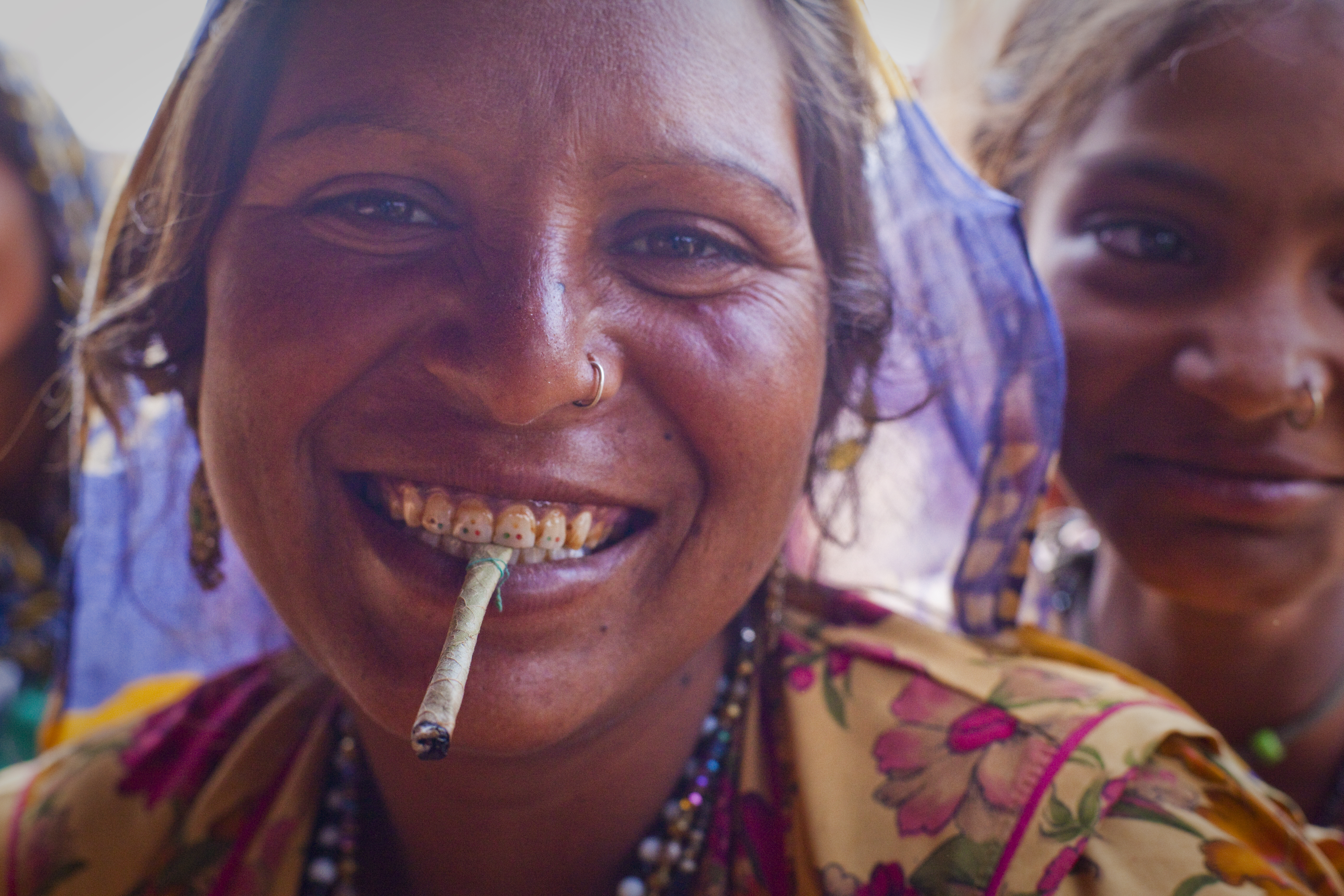
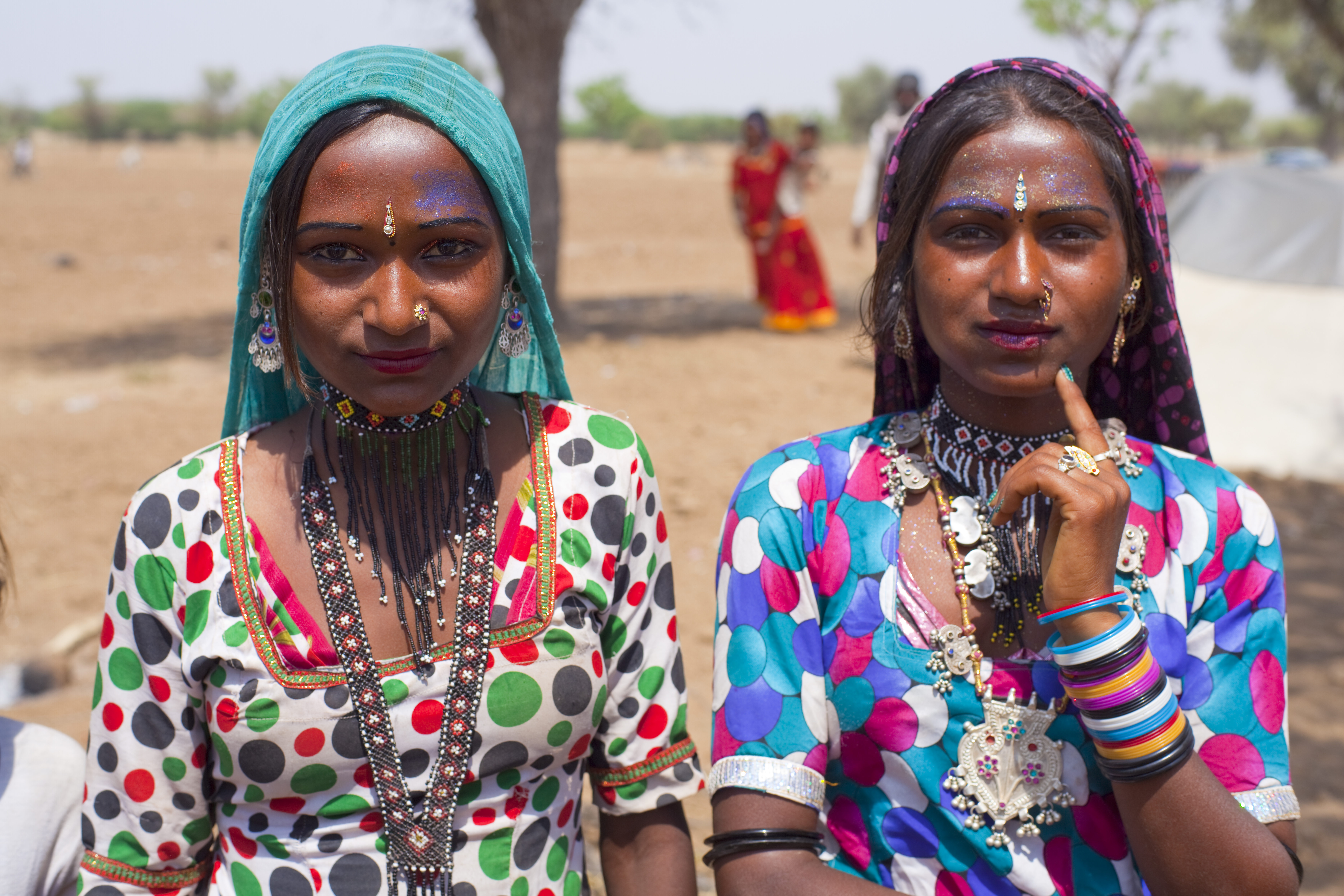
Though Treza and the Kalbelyia didn’t share a common language, communication was achieved through physical performance and attitude.
Kalbelyia are always super proud and mysterious, and then suddenly they become clowns… Fun is their way to break the ice, and test your attitude.
The Kalbelyia are known for a cobra dance in which a female imitates the snake’s twisting movements. Dancing remains an important source of income for most families.
The Kalbelyias made an alliance with their fetish animal. The cobra is the symbol of Shiva, the most worshipped god in India, but besides Shiva, the Kalbelyia worship the goddess Mataji, known as Durga, the Shiva’s wife.
It doesn’t surprise me they worship a female figure, because the Kalbelyia women have very strong power in the tribe. As I show in the movie, the men also cook at home, and the women have a very dominant attitude, they’re also free to go out alone and make money on the streets selling henna or give dance lessons, which is not common in India.
They chose cobra as their symbol and their most famous dance is the cobra dance, which is stunning. The girls have these sensual moves with a dark and mysterious look.
They understood what makes a cobra so special: when you handle it, you feel its strength, it’s basically a huge muscle, and it’s also very fluid: almost impossible to control, it goes wherever it wants. But it has a weakness: one snap of the fingers and it will freeze in ‘cobra pose’, hypnotised. It’s a paradox: hard and fluid, free and docile.
Treza’s camera travels through dusty landscapes to capture celebrations and festivals, where thousands of gypsies gather to showcase their dance techniques. At night the youth engages in fierce dance battles in the sticky, hot darkness, glistening with sweat, covered in dust. They twist and flip, surrounded by a tight circle of viewers. Bills are flashed in the air and given to the best dancer.
It’s clear that their culture is about entertainment, so every Kalbelyia has this sense of how to act on stage, it doesn’t mean they’re all good dancers, but at least they feel free to improvise and perform anytime.
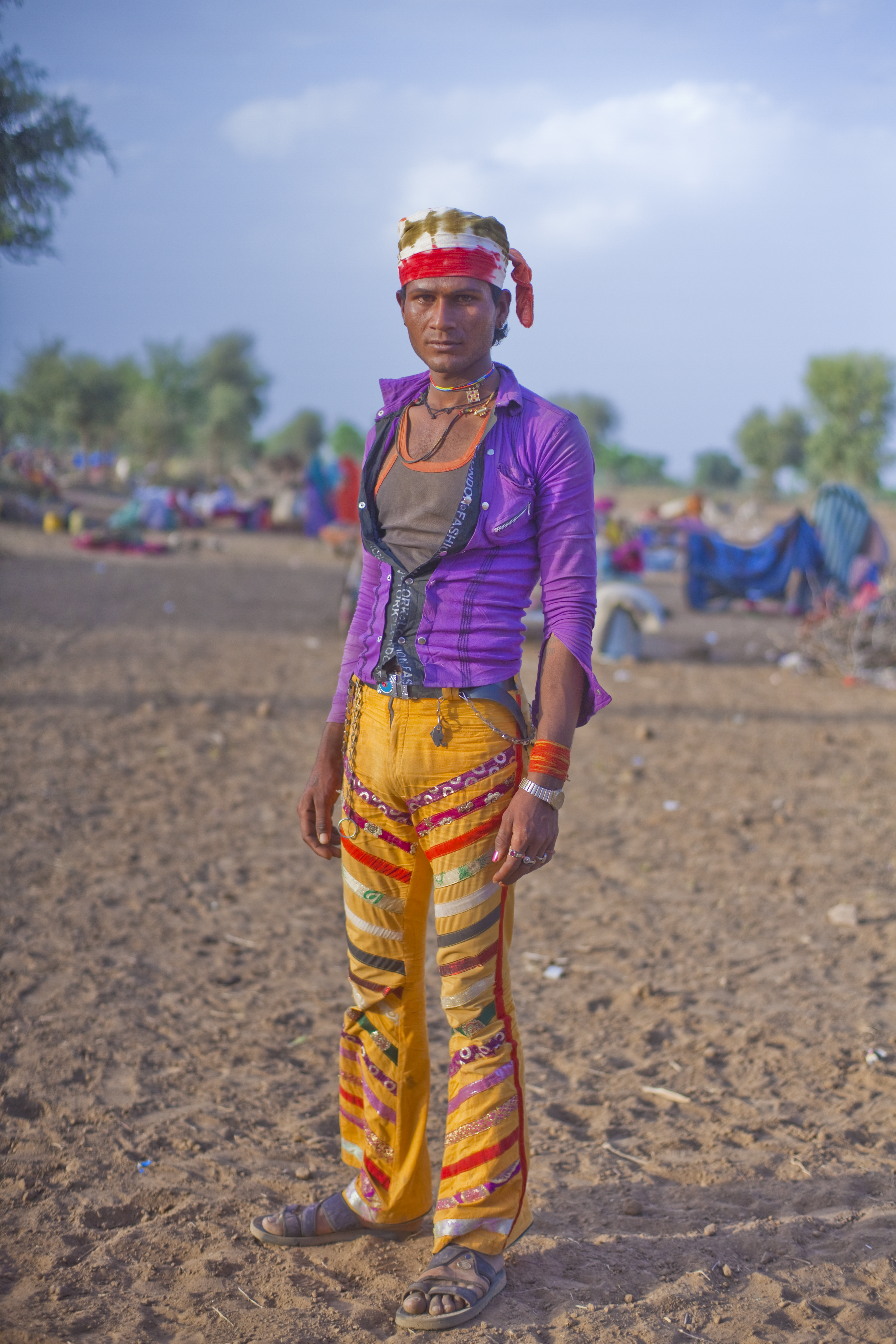
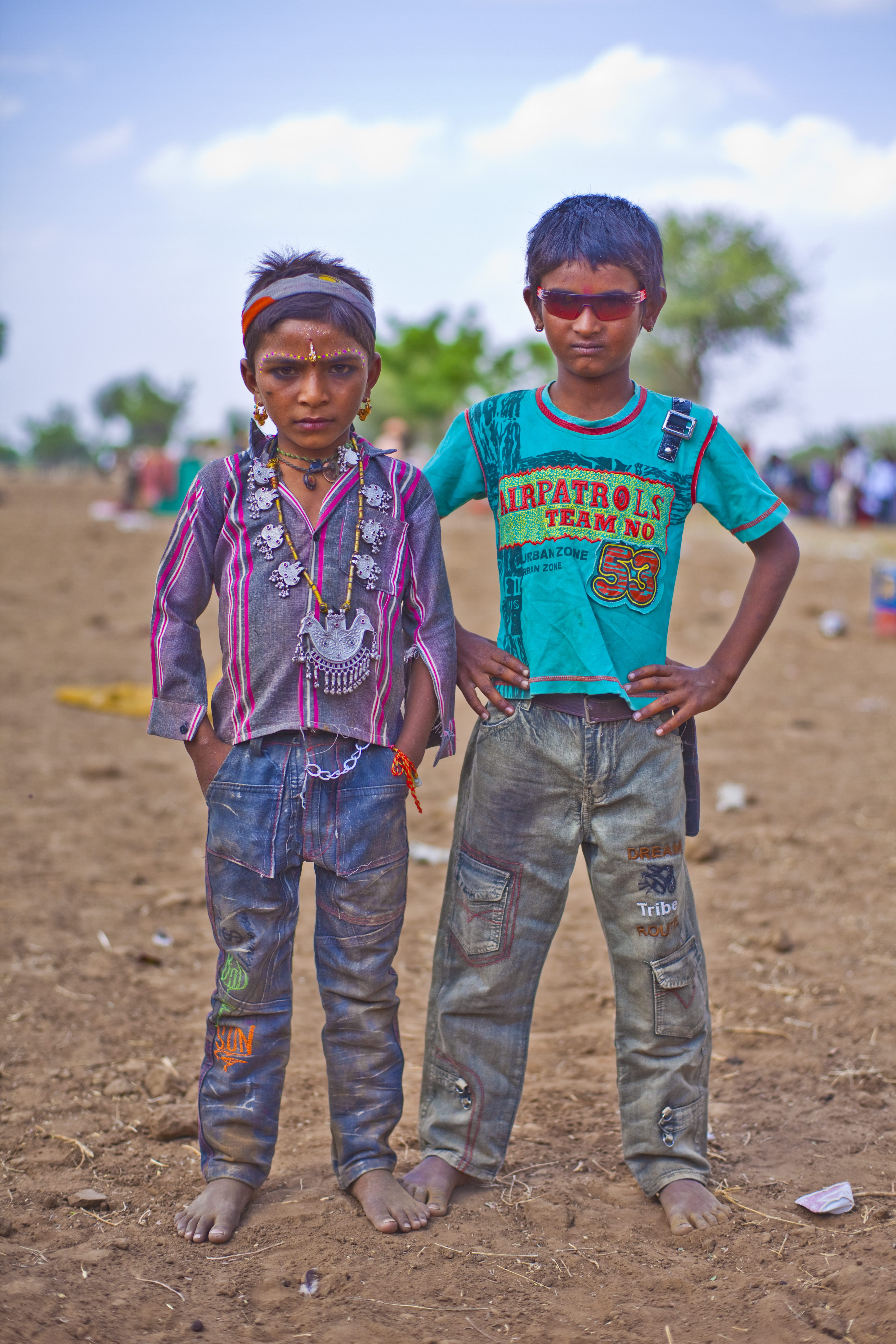
Kalbelyia have an unparalleled and bold sense of fashion. Making sure their clothing stays unique, they design it themselves and produce it with the help of local tailors, combining fabrics, patterns and colours in unbelievable outfits. Their jewellery and accessories are a mix of typical local silver pieces and cheap colourful plastic. They wear children’s toys. They hand paint their sunglasses and make beautiful drawings on their faces and teeth.
While roaming Kalbelyia camps, Raphaël saw other sides of the tribe’s life: they are largely earning their living as agricultural workers and shepherds, and burn wood to make and sell coil. They also hunt cobras to sell their venom, which is used in Ayurvedic medicine to pre-vent sight problems; it’s dropped directly onto the eye socket.
The movie was first about meeting them and seeing how they would react to my camera. Everything was improvised; there was no real theme, just many short stories. I like to think that the storyline looks chaotic, but the whole thing has much more sense than it seems. This is exactly what a trip in India is like: It takes you in many different directions, and if you look the right way, there’s an opportunity to change perspective.
Many viewers intuited a political aspect of the documentary, seeing it as criticism of consumerism, but these views Treza never mentions explicitly. In India, where huge social gaps and paradoxes are the norm, the Kalbelyia are also consumers, obsessed with mobile phones and technology.
The movie makes people think about what being happy means, as they realise those ‘officially’ poor people seem healthy and happy. Sociologists have already analysed the fact that richness is not only about having money (economic capital); one can own many different kinds of capitals, for example symbolic (fame), cultural (music, dance), social (your relations). And on those kinds of capitals, Kalbelyias are very ‘rich’. I appreciate the Kalbelyia for their efficiency, their freedom, and having the courage of being themselves no matter how hard it is to be outside of the main group.
Watch Cobra Gypsies on YouTube:
Raphaël Treza is now working on the portrait photobook from Cobra Gypsies, and on the release of the movie’s soundtrack with a major US company. His first movie Hallucinogen Honey Hunters talks about a tribe that harvests psychoactive wild honey in Nepal.
This article was first published in #4 Supernatural Issue, Current Obsession magazine, 2015
You can buy your issue here
